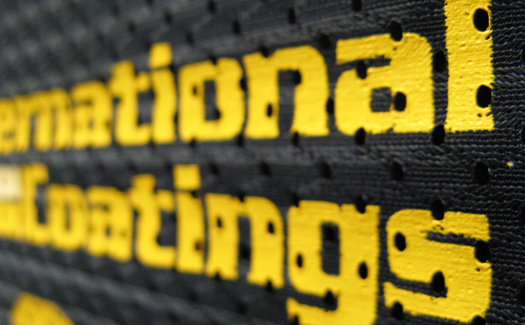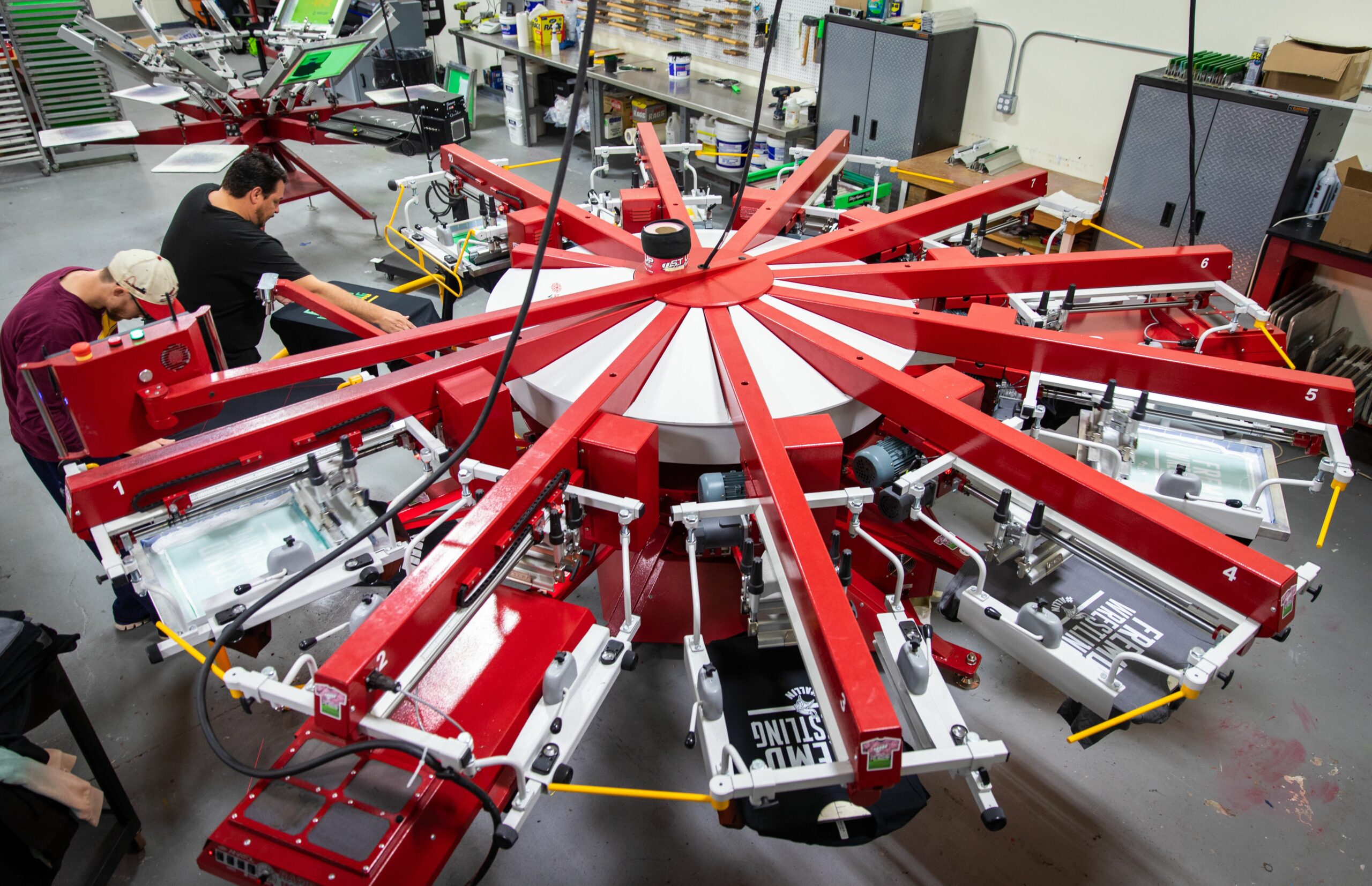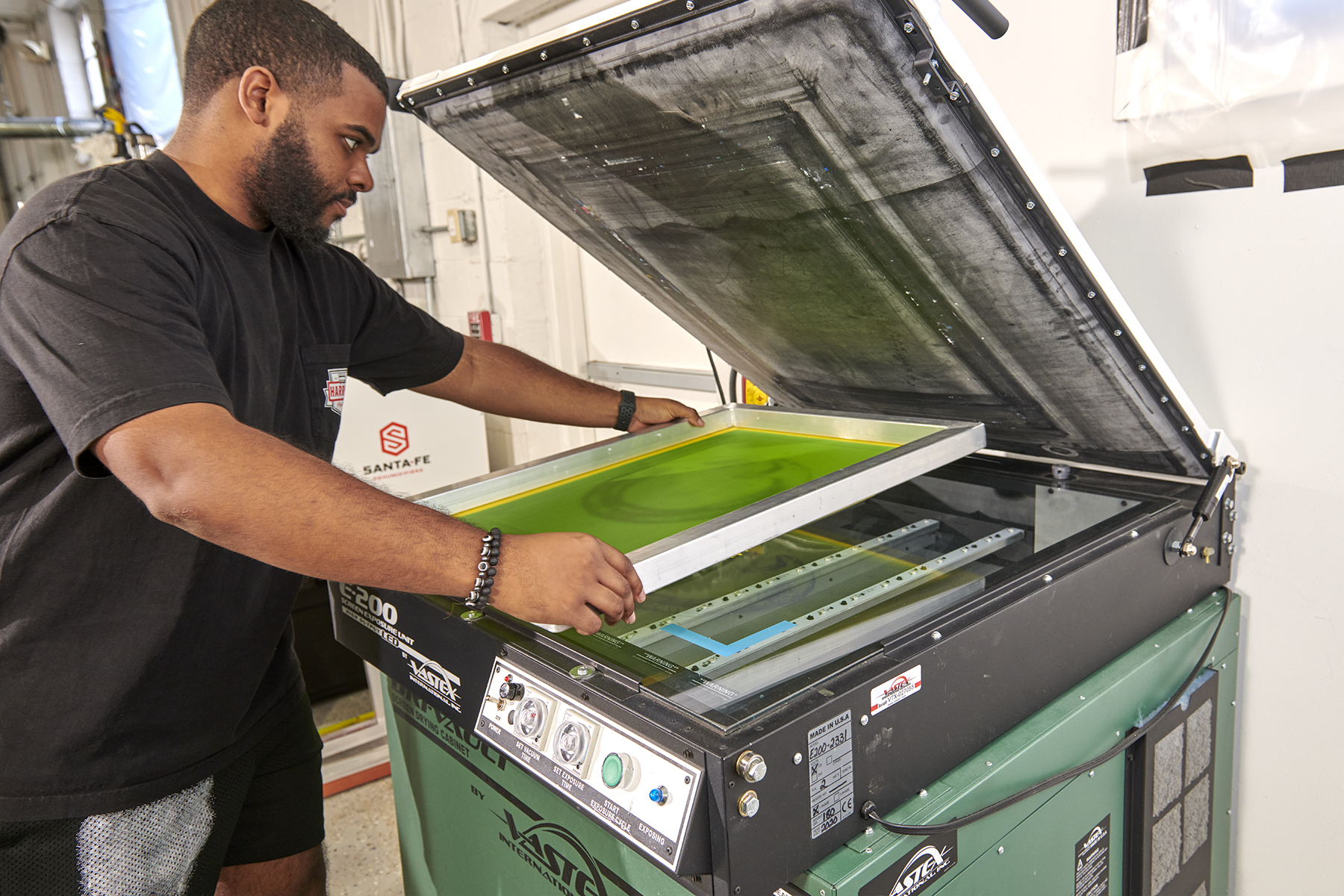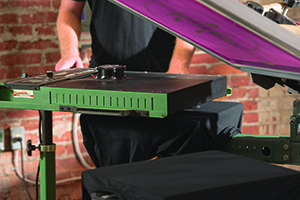August 28, 2012
Printing onto sportswear used to be a straightforward affair. Whether it was for a basketball or football team order, the fabric used was (for the most part) made of 100% polyester or a blend — usually with something stretchable such as Lycra spandex. The printing itself could be difficult — especially on athletic mesh material — but with patience and practice, great results were achievable. Polyester dye migration was the biggest issue printers usually encountered.
In recent years, we have seen the development of a broad range of new synthetic fabrics in the sports and athletic market. The terms “anti-wicking” and “dry fit” are entering the screen printing vernacular. The content of these different fabrics vary, but all have fallen under the umbrella term of “performancewear.” Polyester still is the dominant material element, but now the stretchable portion has risen from 5%-10% to 15%-20%.
There also are newer materials, such as Tactel nylon, or those with properties like the popular retail brand Under Armour — many of which are not only harder to screen print on, but also are heat-sensitive fabrics. Many fabric types and materials are being imported from all over the world and they all are different. Dye migration still is the largest problem to deal with, but some of the newer garments exhibiting heat sensitivity and extra stretch have become compounding problems.
DEFEATING DYE MIGRATION
By far, the most difficult — and often most baffling — problem affecting many screen printers is polyester dye migration. How many times have printers thought they did everything correctly, yet the white ink on a red polyester shirt still turned pink? The critical issue as far as dye migration goes is heat, and this is a very important point to remember.
Polyester dyes are synthetic, so they don’t absorb dyes like a natural fiber, such as cotton, would. They need help to do this. The polyester dye pigment molecules are sublimated at temperatures in the 260°F-270°F range, then chemically sealed onto the fiber.
Plastisol inks, on the other hand, need higher temperatures to cure — typically in the 300°F-320°F range. Put properly, the ink needs to become fused instead of cured. The two main components of plastisol are resin and plasticizer. When mixed, they stay wet for a long time. Once heat is applied, the resin begins to absorb the plasticizer. For textile plastisol inks, once the 300°F-320°F range is attained, the two elements become fully fused, or 100% solid.
When printing on polyester, the problem begins once the garment is exposed to temperatures beyond the 260°F-270°F range, which causes the dye to be set. At this stage of the ink-fusing process, there is the danger that the polyester dye will be sublimated again. If this happens, the plasticizer in the ink will try to “pull” the polyester dye molecules up into itself. This can happen either immediately, days or even weeks later. Once the dye molecules have become gaseous, the proverbial genie is out of the bottle.
There are two main ways to combat dye migration. First, you can use low-bleed inks. These are plastisol inks — typically white — that have a bleed-blocking additive or additives in them. The better ones often are more expensive and are worth paying for. A blocker gray also can be used but, while effective, it can be problematic when it comes to achieving a bright white overprint.
The second way to combat dye migration is to use a low-fusing plastisol. This ink cures at a lower temperature than is typical of plastisol. The newer low-fusing plastisol inks now can be fused at temperatures as low as 275°F. The idea here is to keep the genie in the bottle. Get the temperature low enough so that the ink still will fuse, but the polyester dye will not sublimate; rather, it will stay sealed onto its fiber. Some low-fusing plastisol inks on the market today show great promise and, when combined with low-bleed characteristics, are proving to be very effective at combating polyester dye migration.
COMPOUNDING PROBLEMS
When we turn our attention to printing on performance fabrics, the aforementioned compounding problems come to the forefront. Many newer synthetic fabrics have a higher percentage of stretchable material in them — upwards of 20% in some cases.
The standard approach when printing onto stretchable fabrics is to either add a stretch additive to the ink or to use ink that already contains the additive. The problem here is that as far as low-bleed inks are concerned, any addition — be it a stretch additive, extender or ink reducer — is not good. All of these additives can diminish the inks’ low-bleed characteristics and impinge on their ability to block dye migration. When we use additives with low-bleed inks, we basically dilute their fighting ability.
The challenge for ink companies and printers alike has been finding that balance between needing more stretch — because we’re now using a 80%/20% poly elasticine blend (instead of 95%/5%) — and needing the bleed-blocking capabilities of the ink.
Printing on heat-sensitive materials provides another set of challenges. If the material can withstand temperatures of 320°F or higher, the printer can breathe a small sigh of relief. This will allow the use of a greater range of inks when it comes to low bleed or stretch. If the material cannot take the higher heat, but can withstand the 275°F threshold, then the use of low-fusing plastisols is possible. This will limit the printer’s arsenal, as there are a limited number of effective low-fusing plastisols available. Even then, if stretch additives are required, this can interfere with the low-fusing properties of the ink.
Great care should be taken when you prepare to print onto performance fabrics. The key word here is “prepare,” because the most effective way to deal with the variables of the stretch and heat sensitivity of the newer synthetic fabrics is to arm yourself with as much knowledge as possible.
TESTING IS ESSENTIAL
The importance of testing, especially on performancewear, before beginning production cannot be overstressed. Test and retest everything.
There are a couple of ways to test a garment to determine if it is likely to bleed. First, for the more common approach, heat a transfer machine to 320°F. Then, add a small amount of viscosity reducer to the performance material being tested. Next, place a piece of white cotton or Pellon material on top of the reducer. Press for 30 seconds, remove the white fabric and check for staining. The bigger the stain on the white cloth, the greater the chances of dye migration or bleeding occurring.
The second, less-used test involves printing low-bleed ink onto the fabric being tested. Cure, then cut the piece of material in half. Place one half in a warm/hot location. For best results, a temperature of 150°F is recommended. The heat will accelerate the dye migration and give you an indication of whether it is likely to occur. Or, ask for extra garments for testing, then print one with a low-bleed or low-fusing ink. Cure the ink then wait several days, preferably over a weekend. If the ink hasn’t bled by then, there’s a good chance that it won’t.
A very critical point to remember with bleeding is that there is no 100% effective method. Take note of the absence of “no-bleed” inks on the market. This is because there are no guarantees. There are too many variables, especially with performancewear. With the advent of these newer synthetic materials, we are still on the learning curve as far as garment embellishment goes.
Testing for heat sensitivity also is challenging because it is difficult to decide if a garment will withstand 300°F without actually having to apply that much heat to it. If we do and it fails, we have ruined a very expensive garment. If we don’t and we start production, we may ruin many more. This is a tricky maneuver and, at times, it can be very subjective. If customers are unwilling to supply a test garment, what is the printer to do? The content of the garment itself will give a good starting indicator.
For the most part, 100% polyester can withstand those temperatures easily. If it’s a blend with something unfamiliar, then assume that it is suspect until tested. Nylon and nylon blends on athletic jerseys should be approached with caution.
Lay the garment on the pallet as though you are preparing to print. Use a heat gun to apply heat to a small portion of the garment. Alternately, you can swing the portion of the shirt under a flash unit for several seconds. Watch what happens carefully. If the material begins to pucker or curl quickly, you can be sure that it is heat-sensitive. If this does not happen, then try a sample print.
As you can see, adding embellishments to performancewear presents many challenges. Ink companies react to market changes by developing new products to meet demand. The newer low-bleed and low-cure inks available can attest to that. Though this is welcome, it is important to remember that screen printers also play an important role in product development. While new ink products may be available to print on new fabrics, many of these newer inks do not have a history of use in the real world. Manufacturers spend a lot of time in R&D and testing trying to anticipate problems ahead of time. But lab testing is not a substitute for real-world conditions. Printers are on the front line in either the heat, humidity or cold trying to embellish new synthetic fabrics with newly developed ink
products.
Printers must pay attention to how these newer material blends behave under adverse conditions and react accordingly. Choosing which low-bleed ink to use or whether to try the low-cure route will be decided on the shop floor. These are costly choices, so being informed is crucial.
Push the inks and the performancewear materials manufacturers to provide as much upfront information as possible. You’ve already paid for this information when you bought the product. But testing — and doing so every single time — is the most important thing to do before production.
Ed Branigan is the print applications manager at International Coatings and has extensive experience in screen printing inks and technology. For more information, visit iccink.com and read the company’s blog at internationalcoatingsblog.com.
March 20, 2024 | Production
As with pretty much any business, one of the keys for apparel and T-shirt decorators running a successful custom screen-printing shop is having the right equipment, first and foremost, the right press, or presses.
FULL STORY
March 15, 2024 | Production
As is the case with flash units and dryers, screen exposure units, computer-to-screen-systems and washout booths are critical to successful screen printing of T-shirts and other apparel
FULL STORY
January 16, 2024 | Production
Go to any industry trade show or visit an actual custom apparel screen-printing shop, and your eyes will naturally be drawn to the press, or presses there. This is true whether the shop in question employs a single manual press or is running multiple autos.
FULL STORY




